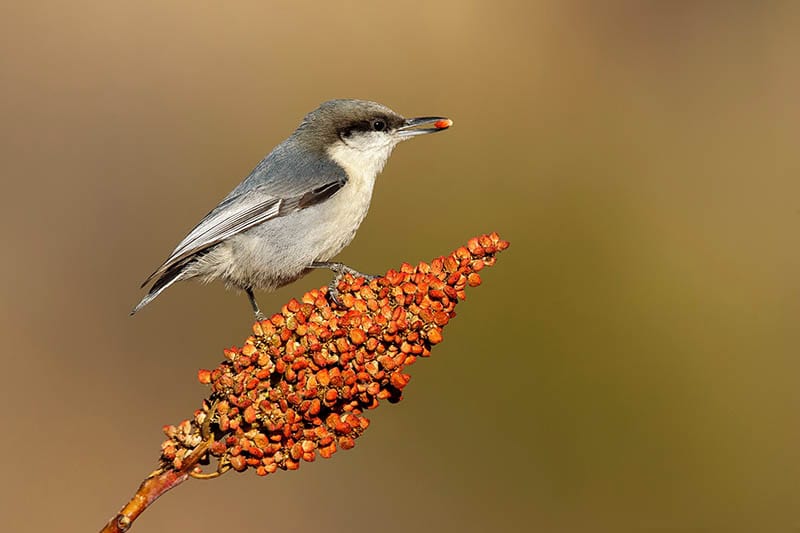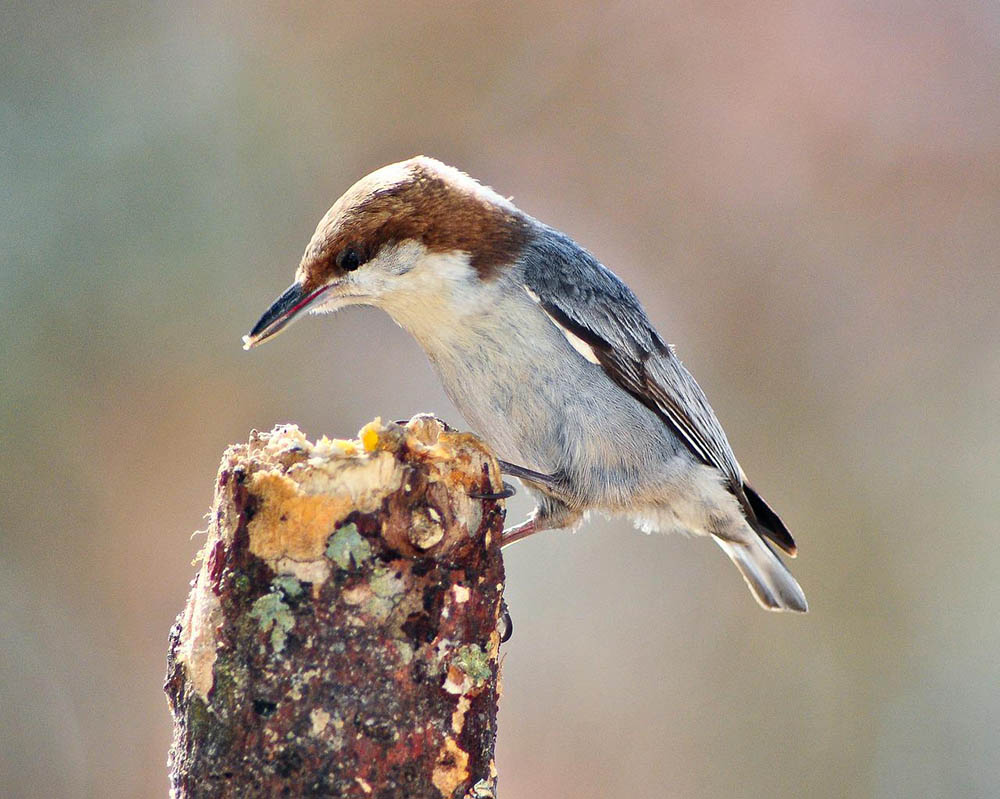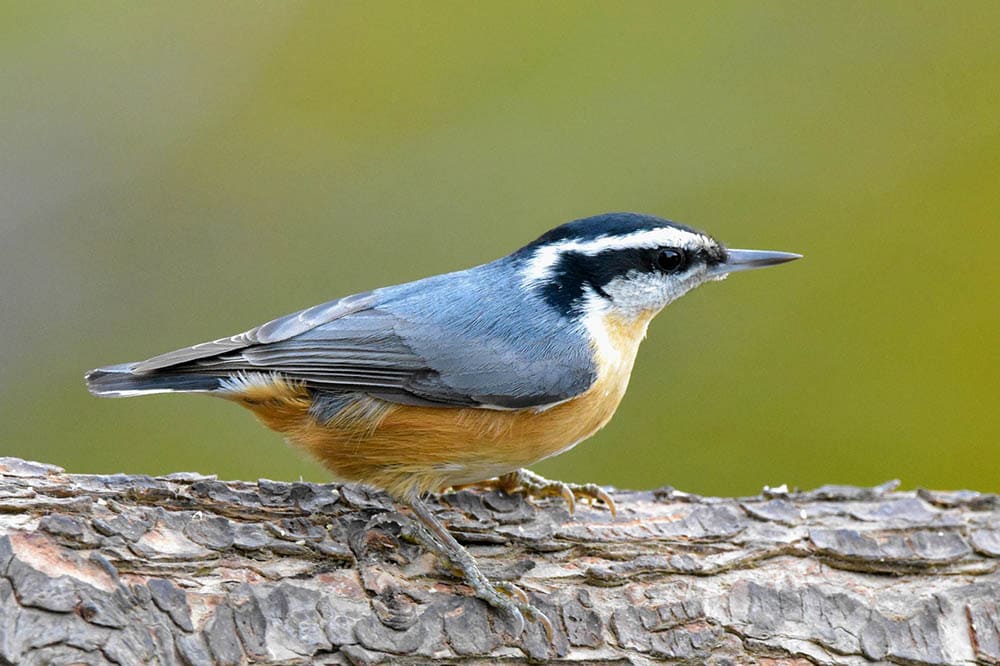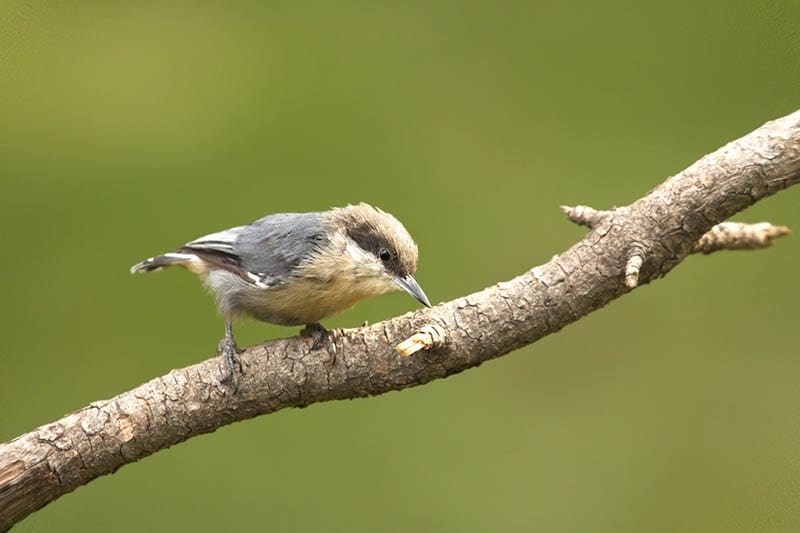4 Common Types of Nuthatches (With Pictures)
Last Updated on

Small, chipper, and surrounded by community with other birds of a similar size and disposition, the friendly nuthatch can be found all throughout the US and parts of Canada and Mexico. Although they typically eat insects that crawl on tree bark, the nuthatch earned its curious name by the method it extracts food from seeds and acorns. The nuthatch bangs its food against the tree and “hatches” out the meat with its pointed beak. Here are 4 common types of nuthatches that you’ll find in North America.

The 4 Common Types of Nuthatches
All nuthatches are similar in color and behavior, but most live in different places, at least seasonally. They also vary in size, with the white-breasted nuthatch being the largest and the pygmy nuthatch being the smallest.
Most nuthatch species are friendly to each other, and even flock with other birds such as the chickadee, but the red-breasted nuthatch can become excessively territorial during nesting season and isn’t as likely to rest in the company of other birds besides their mate.
If you live in an area where the different nuthatch species can overlap, use this guide to discover the unique features that distinguish one nuthatch from another.
1. White-breasted Nuthatch

| Scientific Name: | Sitta carolinensis |
| Origin: | North America |
| Wingspan: | 9-10.6 in |
| Length: | 1-5.5 in |
| Food: | Insects |
| Lifespan: | Up to 9 years |
By far the most common nuthatch species in North America, you can find the white-breasted nuthatch year-round in most parts of the United States and some regions in Canada. It’s the biggest of the nuthatch species, and males and females are the same size. Their color markings are slightly different, with males having a black streak of slick feathers on their heads while females have the same pattern but in a lighter gray color. Both genders have variegated blue, gray, white, and black feathers on their wings, and creamy chests with a rusty patch on their underbelly.
White-breasted nuthatches prefer to nest in deciduous trees instead of the coniferous forests frequented by their other nuthatch buddies. They are also more likely to nest closer to human dwellings instead of deep in the forest. Although their diet is primarily insects, they gobble down more seeds from the feeder than other nuthatches, and are also fans of peanut butter, suet, and sunflower seeds. They even store a supply of seeds in their nests for the long winter. They’re also more likely to occupy a previously hollowed nesting site than carve out their own.
2. Brown-headed Nuthatch

| Scientific Name: | Sitta pusilla |
| Origin: | North America |
| Wingspan: | 3-7.1 in. |
| Length: | 9-4.3 in. |
| Food: | Insects |
| Lifespan: | 5 years |
This nuthatch has a brown head with a slightly auburn tint, brown wings, powder blue shoulders, and a creamy breast. They are average-sized for a nuthatch. Males and females are similar in size and appearance, although the females are a little lighter-colored.
You can find the brown-headed nuthatch year-round in the southeastern United States nesting high in pine trees. They mostly eat bark-dwelling insects such as spiders and beetles, but during the winter, they like to eat pine seeds while the bug population is scarce.
3. Red-breasted Nuthatch

| Scientific Name: | Sitta canadensis |
| Origin: | United States |
| Wingspan: | 1-7.9 in. |
| Length: | 3 in. |
| Food: | Insects |
| Lifespan: | 7 years |
If there was a fighting Irish nuthatch, the red-breasted nuthatch would fit the bill. Unlike other friendly nuthatch species who live in community with other birds, these nuthatches are aggressive fighters who are known to steal building materials from similarly sized nests, even those of other nuthatch species.
The red-breasted nuthatch has a black crown with a white stripe just above its eyes. Most of its feathers are gray. Males have a pumpkin-colored chest, while females have a lighter golden-orange bosom. You can find them all throughout North America, nesting mostly in evergreen trees, but they only stay in the eastern U.S. during non-breeding season.
4. Pygmy Nuthatch

| Scientific Name: | Sitta pygmaea |
| Origin: | Western United States and Mexico |
| Wingspan: | Unknown |
| Length: | 5-4.3 in. |
| Food: | Insects |
| Lifespan: | 2-3 years on average |
The smallest of the North American nuthatch species, the pygmy nuthatch features beautiful, blended shades of gray feathers on its wings and head. It has a slightly darker gray streak by its eyes, and an ivory breast. These birds always nest in groups of typically 5-15 members, but some records show their family may contain up to 150 birds. There hasn’t been a single recorded incident of a pygmy nuthatch living alone. They live 2-3 years on average, but the oldest recorded pygmy nuthatch was 8 years, 2 months.
The size of its wingspan is unknown, and there doesn’t seem to be as much information on this species in general. Their habitat is more limited than other nuthatch species; they’re only found in scattered places in Mexico and the western US, residing mostly in aspen trees and Ponderosa pines. They’re rarely seen east of the Colorado River.

Final Thoughts
Whether you’re strolling through an oak-studded park in the south, or visiting the aspen forests to the west, you’re likely to spot the friendly nuthatch. However, the white-breasted nuthatch is the only species that you’ll find everywhere in North America year-round. The other species mostly dwell regionally or migrate to different parts of the continent throughout the year.
Featured Image Credit: Agami Photo Agency, Shutterstock
About the Author Brooke Bundy
Brooke Bundy is a freelance writer who lives with three cats and a dog. She attended the University of North Georgia where she acquired a B.S. in Media Studies. Booke loves storytelling and spending time with her pets at their house in New Orleans, Louisiana. In her free time, she enjoys gardening, cooking, and brewing coffee.
Related Articles:
Monocular vs Telescope: Differences Explained (With Pictures)
10 Types of Hummingbirds in Arkansas (With Pictures)
8 Types of Hummingbirds in Nebraska (With Pictures)
5 Types of Hummingbirds in Idaho (With Pictures)
3 Types of Hummingbirds in Mississippi (With Pictures)
8 Types of Hummingbirds in Kansas (With Pictures)
5 Types of Hummingbirds in West Virginia (With Pictures)
5 Types of Hummingbirds in Ohio (With Pictures)
